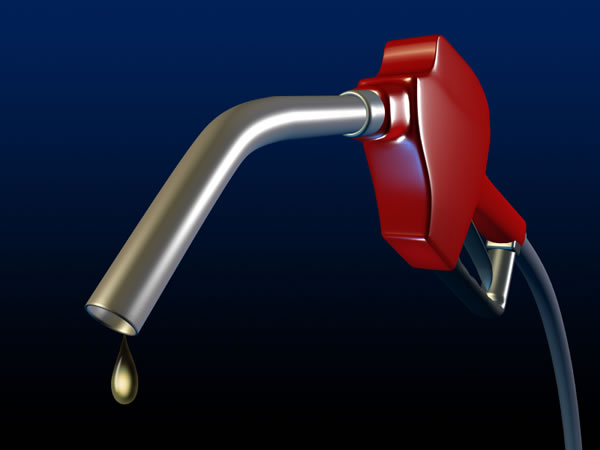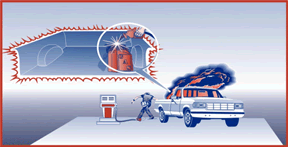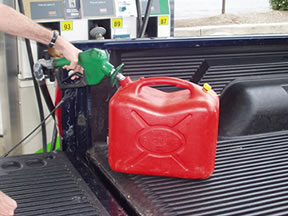The following information is taken from the new Pest Control Technician Safety Manual, 2nd edition:
General Precautions With Gasoline
 |
| Most of us are so familiar with gasoline that we tend to ignore its hazards |
| Graphic © geopaul/iStockphoto |
Gasoline ignites easily, burns vigorously, and may explode. Unless you are a fumigator, gasoline is the most dangerous material you use. Unfortunately, most of us are so familiar with gasoline that we tend to ignore its hazards.
Don’t be careless; follow these safety precautions:
- Avoid breathing gasoline fumes.
- Make sure gasoline is not near any heat source or flame.
- Store only in approved containers.
- Inspect portable gas containers before use. The inside should be free of dirt and debris and the cap should form a tight seal capable of preventing the escape of either vapor or liquid. Metal containers should be free of corrosion. Plastic containers should be free of stress cracks.
- Avoid storing a gasoline container in a vehicle. Do not place gasoline in the passenger compartment.
- When filling portable containers, remove the container from the vehicle, place it on the ground a safe distance from the vehicle, and follow proper safety procedures (see Precautions When Filling Gas Cans below) .
- Put out cigarettes, pipes, or cigars before fueling.
- Before putting a container of gasoline in the trunk of a vehicle, or in the bed of a pickup or truck, tighten the cap of the container and the cap of the air vent, if there is one. Wipe the outside of the container to remove any liquid gasoline or gasoline residue.
- Secure the container in the trunk or pickup so turns or road vibrations won’t cause it to slide around or tip over.
- Do not leave a container of gasoline in direct sun, or in the trunk of a car that is in direct sun. Heating the gasoline will build up pressure in the container.
- Never store the gasoline container next to the termite rig pump motor.
- When fueling equipment, wipe up any spills immediately and move the equipment at least 10 feet away from the fueling area to start the engine. Before refueling, turn off the equipment and let it cool completely.
WARNING—Gasoline vapor is invisible and heavier than air. It can flow along the pavement for some distance when not dispersed by air currents. If ignited, the vapor becomes a fuse that brings the flame back to the liquid gasoline source. The distance that is “safe” depends on the conditions, but fire experts believe placing the container about five feet from an ignition source usually should be sufficient.
Filling Gas Cans in Vehicles
 |
| A fire can spontaneously ignite while you fill a gas can on a plastic bed liner in a pickup |
| Illustration from NIOSH and CDC |
A fire can also spontaneously ignite if you attempt to fill a portable gasoline container (gas can) on a plastic bed liner in a pickup truck, or in a carpeted car trunk.
These fires are caused by the buildup of static electricity. The gasoline flowing into the container generates a static charge that is prevented from grounding by the insulating effect of the truck bed liner or carpet. This static buildup is then discharged to the grounded gasoline dispenser nozzle and may cause a spark and ignite the gasoline. Both ungrounded metal (most hazardous) and plastic gas containers have been involved in these incidents.
The problem is resolved by providing a pathway to release the static charge buildup.
Precautions When Filling Gas Cans
-
Do not refill portable gasoline containers while they are inside pickup trucks or cars.
Do not fill cans in the truck bed. Remove them and place them on the ground a safe distance away Photo © Pinto & Associates - Remove the containers from the vehicle and place them on the ground at a safe distance from the vehicle. (Placing the container on the ground provides a path to dissipate any static charge.)
- Touch the container with the gas dispenser nozzle before removing the container lid. (This provides another path to dissipate any static charge to the ground.)
- Keep the nozzle in contact with the container inlet when filling. (This dissipates static charge buildup from the flow of gasoline.)
- Manually control the nozzle valve throughout the filling process. Fill a portable container slowly to decrease the chance of static electricity buildup and minimize spilling or splattering.
